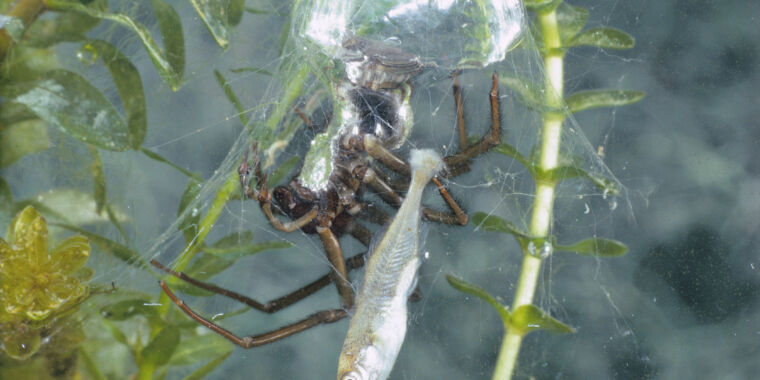Aquatic Spiders: The Unexplored World of Arthropods
Spiders are known for weaving intricate webs in the corners of homes or lurking in dark basements, but some species of these fascinating arachnids have taken a different approach to habitat selection. Surprisingly, certain spiders have made their homes near bodies of water, including beaches and streams. These aquatic or semiaquatic spiders exhibit unique behaviors that have intrigued researchers and scientists worldwide.
Adaptability of Aquatic Spiders
According to Ximena Nelson, a distinguished behavioral biologist at the University of Canterbury in Christchurch, New Zealand, spiders demonstrate remarkable adaptability, allowing them to thrive in various environments. Nelson’s research focuses on aquatic spiders that have evolved to occupy watery habitats such as ponds, lakes, and seaside beaches. These spiders exhibit distinctive behaviors, including spinning cocoons in aquatic settings and seeking refuge under rocks near the water.
Tracking down aquatic spiders presents considerable challenges for researchers like Nelson. In her pursuit of the elusive Marpissa marina, a jumping spider found on pebbly seaside beaches, Nelson has encountered difficulties in observing their behaviors. Despite years of study, these spiders have a knack for disappearing under rocks, making it challenging to document their activities accurately.
Diversity and Evolution of Aquatic Spiders
Aquatic spiders represent a diverse group of arachnids that have evolved over millions of years to adapt to unique environments. Sarah Crews, an arachnologist at the California Academy of Sciences in San Francisco, highlights the extensive variety of spider species that spend part of their lives in or near water bodies. Crews’ research indicates that spiders have developed aquatic preferences on multiple occasions throughout history, leading to the emergence of semiaquatic species in various taxonomic families.
Recent studies suggest that spiders have a long evolutionary history of transitioning between terrestrial and aquatic habitats. Approximately 21 taxonomic families of spiders include semiaquatic species, hinting at the widespread occurrence of aquatic adaptations in arachnids. While the exact reasons behind this transition remain unclear, researchers speculate that food availability or survival pressures may have influenced these evolutionary changes.
Challenges of Aquatic Spider Adaptations
Geerat Vermeij, a prominent paleobiologist and professor emeritus at the University of California, Davis, sheds light on the challenges faced by aquatic spiders. These arthropods, originating from land-dwelling ancestors, must overcome numerous obstacles when adapting to watery habitats. Vermeij explains that aquatic spiders face fierce competition from other water-dwelling predators, such as crustaceans, making survival in aquatic environments a daunting task.
Furthermore, water poses significant risks to spiders’ respiratory systems, as submersion can be fatal due to the inability to access air. Adaptations to facilitate breathing and underwater movement have been crucial for the survival of aquatic spiders throughout their evolutionary history. Despite these challenges, aquatic spiders continue to thrive in their unique habitats, captivating researchers with their remarkable abilities.
Image/Photo credit: source url





